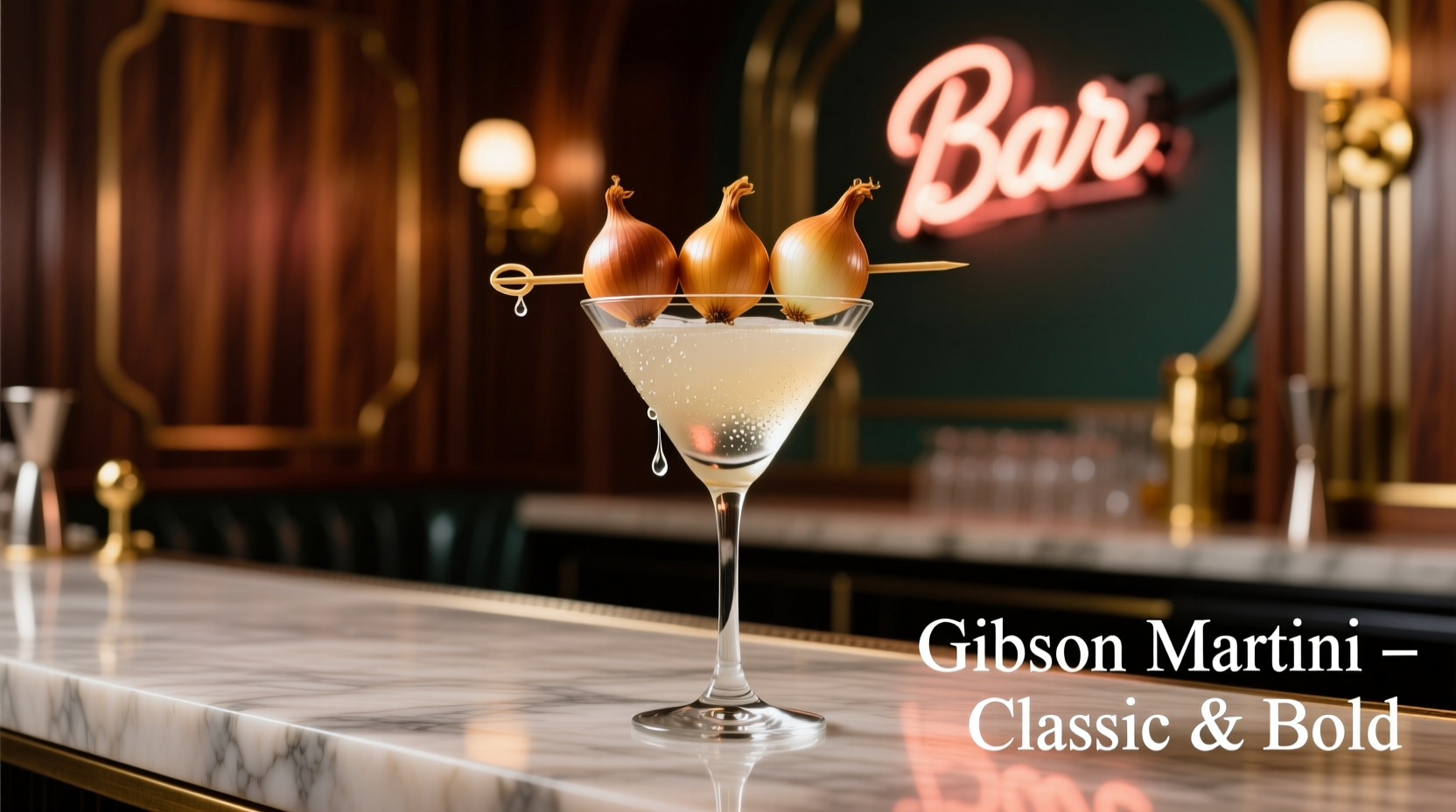The Gibson Martini: Where Savory Meets Sophistication
When you order a martini with cocktail onion, you're requesting one of cocktail history's most elegant variations—the Gibson. Unlike its olive-garnished cousin, the Gibson delivers a refined, slightly sweet-savory finish that complements both business discussions and celebratory occasions. This isn't just a martini with a different garnish; it's a distinct experience that has maintained its appeal through changing cocktail trends.
From San Francisco to Global Icon: The Gibson's Journey
The Gibson's origin story remains one of cocktail history's most debated topics. While several theories exist, the most widely accepted narrative points to late 19th century San Francisco. According to cocktail historian David Wondrich's research published in Imbibe!, the drink likely emerged around 1898 when prominent businessman Charles Dana Gibson either created or popularized this variation.
Evolution of the Gibson Martini
- 1890s: First appears in San Francisco social circles, possibly created by or for Charles Dana Gibson
- 1908: Officially documented in William "Cocktail" Boothby's The World's Drinks And How To Mix Them
- Prohibition Era: Gained popularity as a "businessman's drink" due to its clean, professional appearance
- 1950s-60s: Featured prominently in corporate dining rooms and high-end hotels
- 2000s: Experienced resurgence during the craft cocktail movement
- Present Day: Recognized by the International Bartenders Association as an official classic cocktail
Why the Onion Makes All the Difference
The cocktail onion isn't merely a visual substitute for an olive—it fundamentally transforms the drinking experience. Unlike olives which contribute brininess and oil, the pickled onion introduces subtle sweetness with a clean, aromatic finish. This creates what mixologists call a "drier" profile that many find more versatile for pairing with food.
| Garnish Type | Flavor Contribution | Texture Impact | Traditional Pairings |
|---|---|---|---|
| Cocktail Onion | Sweet-savory, aromatic | Crisp, clean finish | Oysters, caviar, smoked fish |
| Olive | Salty, briny | Oily mouthfeel | Charcuterie, aged cheeses |
| Lemon Twist | Citrus-forward | Clean, bright finish | Fresh seafood, light appetizers |
According to research from the Culinary Institute of America's beverage program, the sulfur compounds in onions interact differently with alcohol than olive oil, creating a more integrated flavor profile that doesn't coat the palate. This makes the Gibson particularly well-suited for multi-course dining experiences where palate cleansing matters.
Mastering the Perfect Gibson: A Bartender's Guide
Creating an exceptional Gibson requires attention to detail at every step. Professional mixologists follow these precise guidelines:
Essential Ingredients
- Gin: London dry gin provides the classic botanical profile (Beefeater, Tanqueray)
- Vermouth: Dry French vermouth (Noilly Prat, Dolin)
- Garnish: High-quality cocktail onions (better brands use pearl onions in mild brine)
The Perfect Ratio
The International Bartenders Association standard calls for 5:1 ratio (2.5 oz gin to 0.5 oz vermouth), though modern interpretations often use less vermouth. For a truly dry Gibson:
- Classic: 2.5 oz gin, 0.5 oz vermouth
- Dry: 2.5 oz gin, 0.25 oz vermouth
- Extra Dry: 2.5 oz gin, 0.125 oz vermouth
Preparation Technique
- Chill a stemmed cocktail glass in the freezer for at least 15 minutes
- Fill a mixing glass with premium ice cubes (larger cubes melt slower)
- Add gin and vermouth to the mixing glass
- Stir gently for 30-40 seconds until properly diluted and chilled
- Strain into the chilled glass
- Garnish with 1-3 cocktail onions on a skewer

When to Choose a Gibson Over Traditional Martini
The Gibson isn't just a different garnish—it's a strategic choice for specific occasions. Understanding when to select this variation demonstrates cocktail sophistication:
Professional Settings
The Gibson has long been considered the "businessman's martini" for good reason. Its clean appearance (no oily sheen from olives) and subtle flavor profile make it appropriate for:
- Client meetings before dinner
- Boardroom discussions
- Formal business dinners
Food Pairing Considerations
According to a 2023 study published in the Journal of Sensory Studies, the Gibson's flavor profile complements certain foods more effectively than traditional martinis:
- Seafood: Particularly excellent with oysters, caviar, and smoked salmon
- Cured Meats: Pairs beautifully with prosciutto and other delicate charcuterie
- Cheeses: Works well with aged Gouda and mild blue cheeses
Avoiding Common Gibson Mistakes
Even experienced cocktail enthusiasts sometimes miss the mark with Gibsons. Watch for these pitfalls:
The Onion Issue
Not all "cocktail onions" are created equal. Many commercial brands use strong vinegar brines that overpower the drink. For authentic results, seek onions packed in mild brine without artificial colors. Serious Eats' 2022 taste test identified three premium brands that maintain the delicate balance required for proper Gibsons.
Temperature Troubles
A Gibson should be served near freezing (around 20°F/-7°C). Many bars serve martinis too warm, which accelerates dilution and distorts flavors. The proper technique involves both chilling the glass AND using near-freezing ingredients.
Gin Selection Matters
While vodka Gibsons exist, traditionalists argue they miss the point. The botanicals in London dry gin interact with the onion's sulfur compounds to create complex flavor notes that vodka cannot replicate. For the authentic experience, choose a classic London dry gin with prominent juniper notes.
Modern Interpretations Worth Trying
While purists prefer the classic preparation, innovative bartenders have created noteworthy variations:
- The Smoked Gibson: Uses smoked gin and onions pickled with applewood smoke
- The Dirty Gibson: Adds a small splash of olive brine for complexity
- The Seasonal Gibson: Features onions pickled with seasonal herbs (tarragon in spring, rosemary in winter)
These variations maintain the essential Gibson character while offering new dimensions for adventurous drinkers. The key is ensuring the onion remains the star garnish—never substituting with other ingredients.











 浙公网安备
33010002000092号
浙公网安备
33010002000092号 浙B2-20120091-4
浙B2-20120091-4